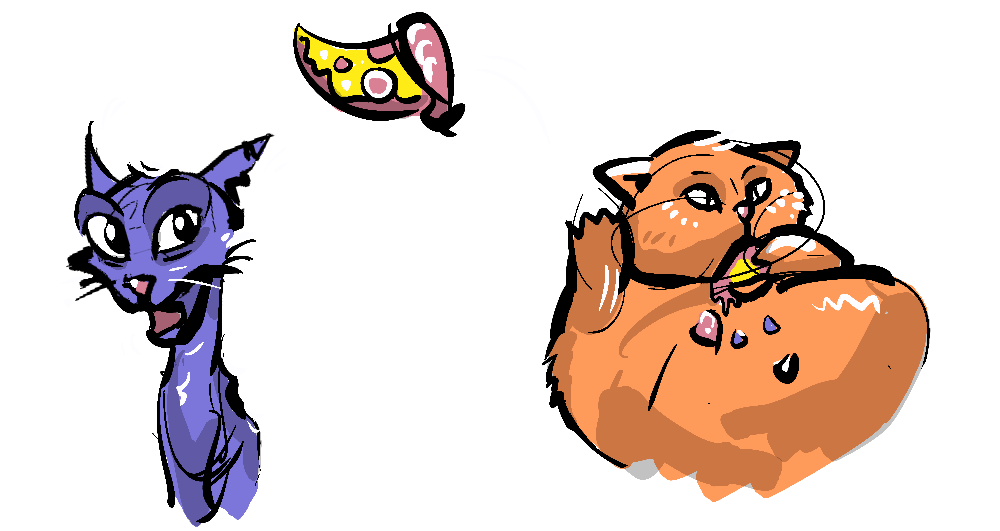

Ever noticed that the first slice of pizza is always the best and each slice afterwards never quite matches up? Well, welcome to...
This is a principle from economics which holds that as investment increases, returns diminish relative to the investment (or cost). Tap the graph below to see various diminishing returns scenarios..
The black line represents return-on-investment. The linear growth line shows what it would look like if returns equaled cost. As you can see the returns begin well, returning more than the cost but at a point they fall below the cost.
In economic terms this form of optimising returns relative to costs is called satisficing. This makes a compromise between no investment and investing everything, finding the sweet spot to get the highest return per unit of cost.
When it comes to Happiness and Wealth, we can take our friend Mr. F. Cat—he's the one who's full of pizza. Fat Cat is a motor-head, and gets immense joy from furnishing his garage with gleaming supercars like a feline Jay Leno... to begin with, but at a certain point each shiny new automobile adds less joy than the last. He ponders to himself, how can I make more joy? Then he spots Mr. A. Cat and has an idea.

Now, this act of generosity does little to dent Fat Cat's happiness (remember—diminishing returns), but for Alley Cat, who has never owned anything more than a box, this gift is a game-changer. It's a total positive-sum game!
Added-Joy = (Life-changing joy from the car to Alley Cat)—(Diminished joy from the car for Fat Cat).
And here's the kicker—this act doesn't just make Alley Cat happier, because happiness is itself non-zero-sum, it's contagious—making someone else happier, makes you happier too. A study by Harvard Business School Professor Michael Norton Feeling Good about Giving: The Benefits (and Costs) of Self-Interested Charitable Behaviour involved giving participants an amount of money. Half of the participants were told to spend the money on themselves, and the other half were instructed to spend the money on someone else. The researchers found that those who spent money on others reported significantly greater happiness.
People will often object to this sort of approach by claiming that the poor can only be incentivised to work by the threat of deprivation that comes with poverty.
"It is only hunger which can spur and goad (the poor) onto labour"—Joseph Townsend
But this is obviously not the case, if it were, then the issue of poverty would have solved itself long ago. First of all there are many people who are poor for reasons outside of their control, such as physical and mental illness, inherited disadvantage or even just bad parenting. But it turns out that, more generally, the relationship of income to motivation also has its own diminishing returns curve.
When people have no resources, they feel powerless and unmotivated, and extreme poverty also significantly reduces a person's ability to concentrate making it more difficult to make good decisions, but every small increase in income can have a profound impact on motivation. This continues to increase until we get to the end of the scale where people are wealthy enough that hard work becomes unnecessary and there are diminshing returns on happiness from wealth (as we've covered) leading to diminishing motivation for work.
So, the motivation curve is a diminishing returns curve beginning very low, rising rapidly and then declining.
What's the lesson in this tale of two cats? The law of diminishing returns isn't just a law; it's an opportunity. It's an invitation to redistribute what we have in excess to those who will benefit the most from it, optimising joy for all. Who knew economics could be so warm and fuzzy?

Purr-fect.